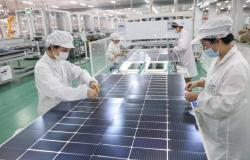
Following World Prematurity Day, Sunday 17, an awareness morning is organized for the general public and health professionals this Tuesday 19, from 9 a.m. to noon, at the Women and Children center of the Cayenne Hospital Center.
« In Guyana, the rate of premature births is twice as high as in France. » The words are from Lucie Leroyer, nurse and president of Préma Yana. The association brings together professionals from the Cayenne Hospital Center (CHC) and helps parents of premature babies. « The objective of this morning is to raise awareness about this subject, so that parents know that it exists and that it can happen to anyone, even if you are a healthy mother, even if you have already given birth at full term.”
There are three types of prematurity: medium (7 to 8 months of pregnancy), large (6 to 7 months of pregnancy) and very large (below 6 months of pregnancy).« The Cayenne hospital is the only one in Guyana that can care for premature babies, that is, babies born after 24 weeks of gestation. », indicates Lucie Leroyer.
•
©A.V. archives
Among the causes of prematurity, one factor may be lack of follow-up. But Lucie Leroyer reminds us that sometimes, even if the woman consults regularly for her pregnancy, she is not safe. « There are other pathologies that we cannot anticipate. Often, mothers who have a premature baby have never heard of prematurity before. This is why we are setting up this type of meeting, so that we know that it exists. » Also, future mothers, health professionals and the general public are invited to this meeting. Videos and testimonials from parents who have gone through this ordeal will also be offered.
•
©A.V. archives
From 9 a.m. to noon, in the hall of the Women and Children Center of the CHC, health professionals will present a typical room of a premature baby with the machines used to help the child develop. Several information stands will also be offered. Préma Yana, the organizing association, will talk about support, as will the Early Medical-Social Action Center (Camsp) in Cayenne, which brings together professionals involved in monitoring the development of children born prematurely. The association of childcare workers will come and present their profession. Lucie Leroyer, also a lactation consultant, will offer a breastfeeding support workshop.
•
©A.V. archives
Other group present : the brand new Sonjlanmou association, which will raise awareness of perinatal mourning. Sonjlanmou will be able to support his point by relying on the very moving exhibition of the photographer Anne-Sophie Bender installed at the PFE for a month and of which this is the last day.
France





